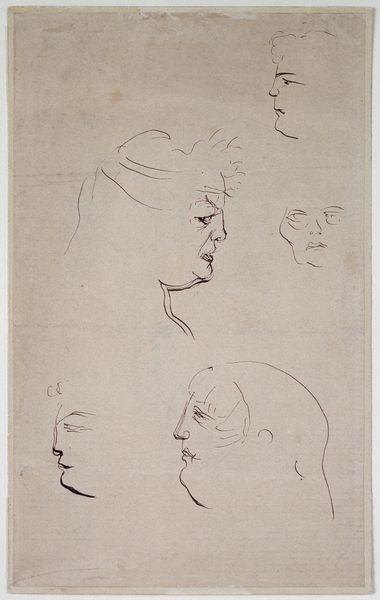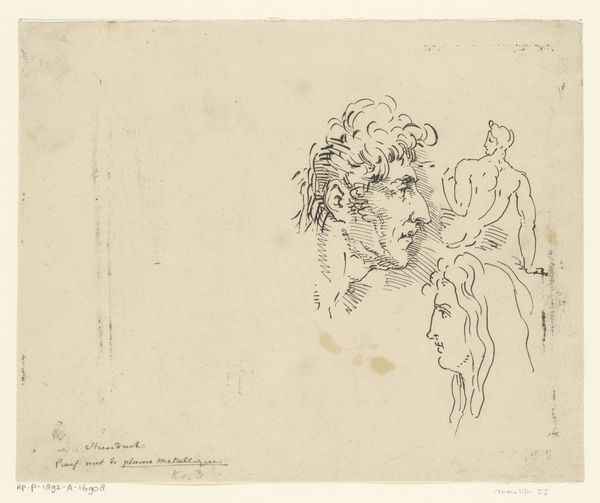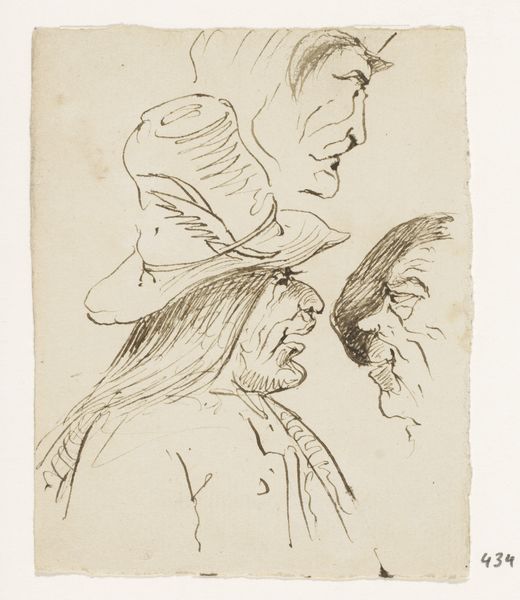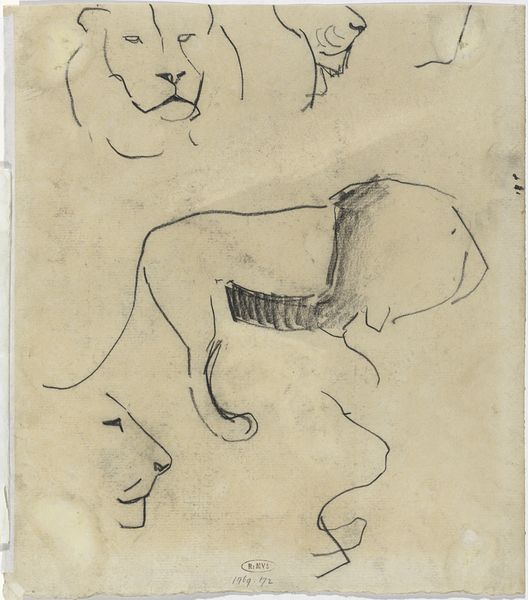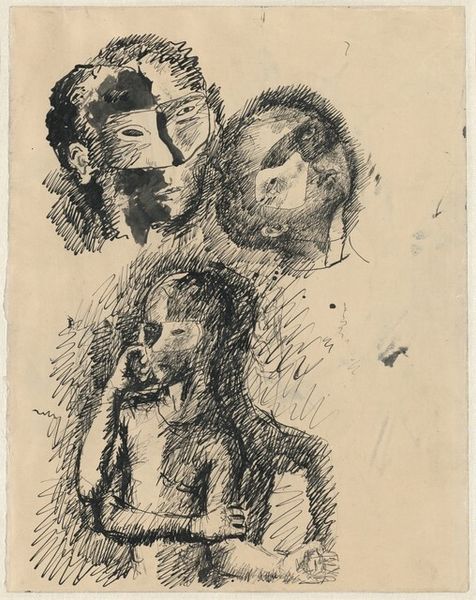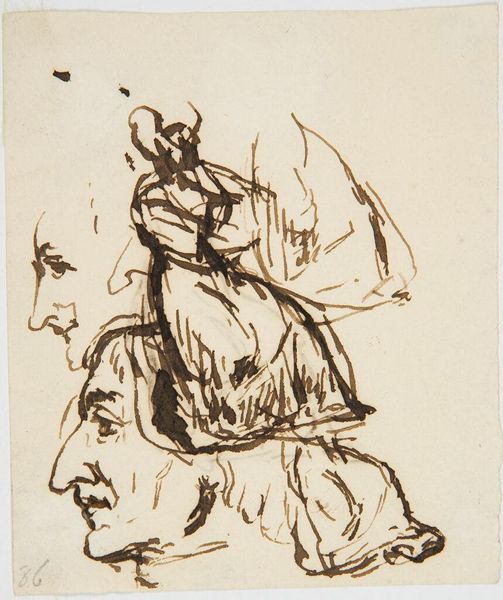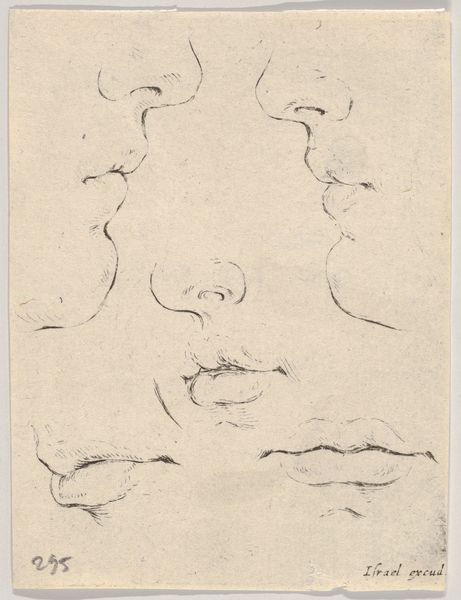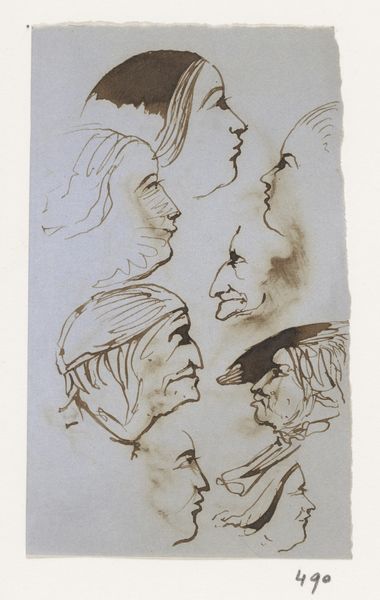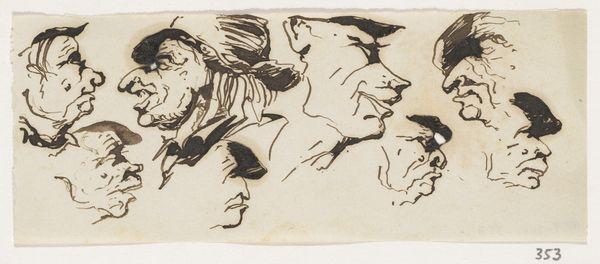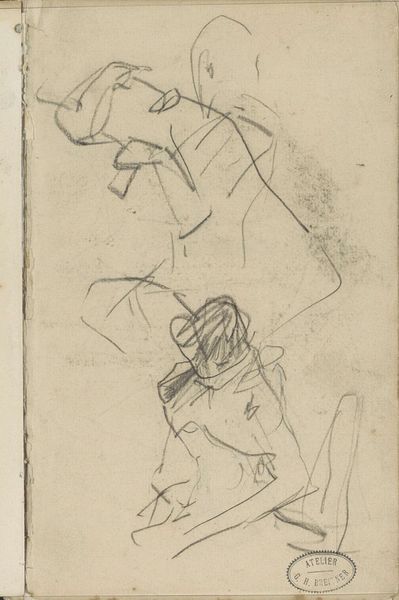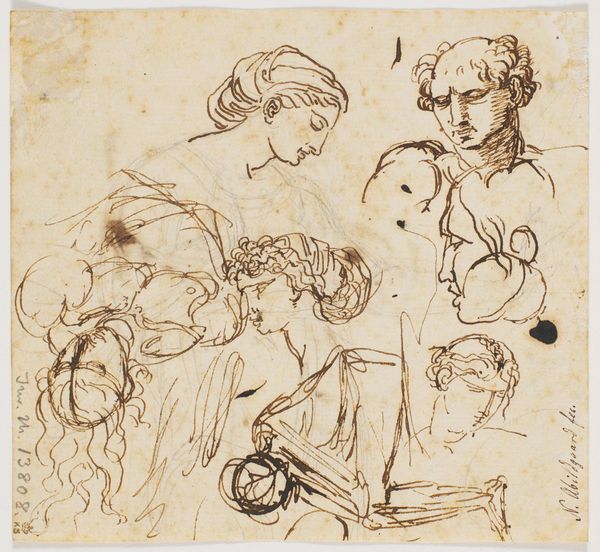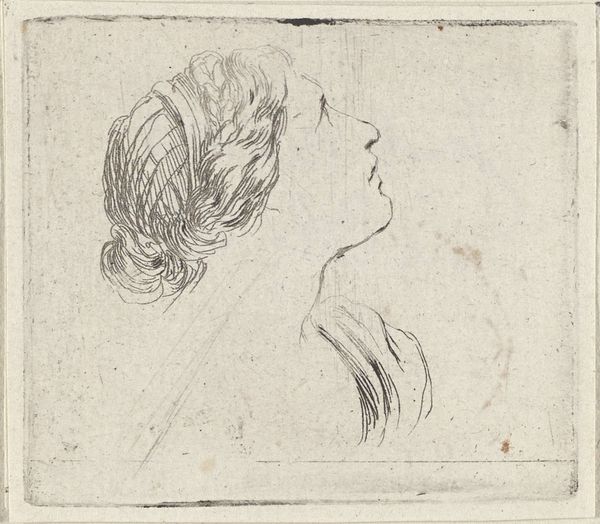
drawing, paper, ink, pencil
#
portrait
#
drawing
#
caricature
#
pencil sketch
#
paper
#
ink
#
pencil
#
genre-painting
Dimensions: height 260 mm, width 46 mm
Copyright: Rijks Museum: Open Domain
Curator: Johannes Tavenraat's "Strook met koppen en staande man," created in 1866, greets us here. It's a study done in pencil and ink on paper and currently resides in the Rijksmuseum. Editor: It strikes me as rather Dickensian. These characters seem pulled straight from the pages of an Oliver Twist manuscript; they really have such an expressive, though rather exaggerated quality. Curator: Yes, Tavenraat's clear use of line and hatching suggests a conscious understanding of graphic arts and the developing print culture. The very materiality of the work emphasizes its production as a readily reproducible commodity. It's interesting to note the varying degrees of finish in each head, suggesting perhaps, different sittings or the artist experimenting with rendering specific details, wouldn't you agree? Editor: Absolutely. Thinking about the socio-political context, the act of caricature itself becomes a tool of observation, a commentary on power dynamics perhaps. The drawing is also more than mere illustration; it's an interpretation that reflects both the artist's view and societal biases present in 19th-century Netherlands. Consider how class is represented here: it seems we are given glimpses into different strata of society, made somewhat grotesque. Curator: I find myself captivated by the way the artist combined the mediums. He's really exploring the limits of ink's possibilities to mimic the softness and precision that a pencil sketch can often offer. Editor: That's true; the starkness of the ink provides a sharp contrast that serves the work well; that level of expressiveness allows for these very pointed, sharp and critical observations. The body language and exaggerated physiognomies almost become symbols for the internal state. It does leave me curious about who these individuals are thought to represent within their time, and why the artist selected each character for that time. Curator: Yes, understanding the social purpose of those exaggerated representations and where this type of depiction played a role in 19th-century society remains something worth investigating. Editor: A compelling piece of work for sure.
Comments
No comments
Be the first to comment and join the conversation on the ultimate creative platform.
